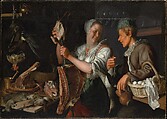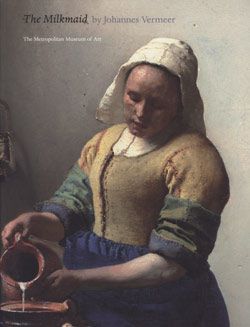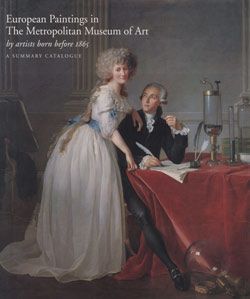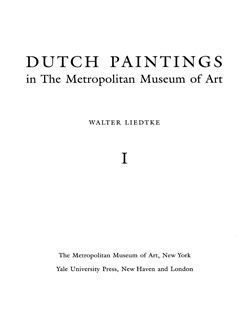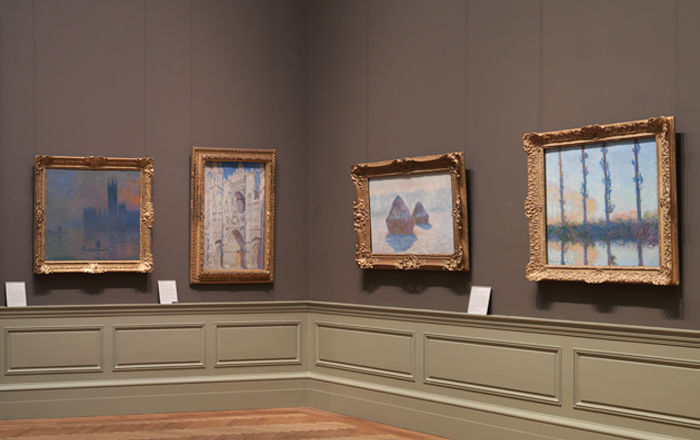When this painting was purchased in 1906, it was called
Cook Shop, "a Jan Steen of exceptional beauty and importance" (Evening Post 1906). By 1914, curator Bryson Burroughs had attributed the work to the Amsterdam painter Adriaen van Nieulandt (1587–1658), following the advice of Abraham Bredius (n.d.). Hella Robels, an authority on Frans Snyders (1579–1657), the Antwerp painter of still lifes and kitchen and market scenes, observed (1974) that the picture must be Dutch, not Flemish.
Pieter van Thiel and Keith Moxey independently reported (1980) that they were strongly reminded of works by Joachim Wtewael. The picture was subsequently brought to the attention of the Wtewael specialist Anne Lowenthal, who published it (1986) as a new attribution to Wtewael's son Peter.
Peter Wtewael's responsibility for the work can hardly be doubted. Lowenthal describes the "hearty figures," facial types, robust naturalism, and "a preference for convex forms" as typical of the artist. In his
Adoration of the Shepherds (Wallraf-Richartz-Museum, Cologne), which is signed "Peter wte wael" and dated 1624, the faces of the Virgin and of two of the shepherds recall the features and, oddly enough, the jovial expressions of the couple depicted here. The kitchen maid also resembles the figure in Peter Wtewael's
A Shepherdess with a Lamb, of the late 1620s (location unknown), where the lopsided grin similarly suggests a savvy attitude.
This composition may be considered a 1620s remodeling of older designs, like Joachim Wtewael's
Kitchen Scene with the Parable of the Great Supper, of 1605 (Gemäldegalerie, Berlin) and the same artist's
Kitchen Scene with the Supper at Emmaus, of about the same date (private collection, Germany), and also paintings by contemporary artists such as Cornelis Jacobsz Delff (1571–1643). Transitional works, in terms of design, were painted in Haarlem by Pieter Cornelisz van Rijck (1567/68–in or after 1635), Floris van Schooten (1585/88–1656), and Cornelis Engelsz (1574/75–1650). Another source of inspiration for Peter Wtewael's painting was his father's
Kitchen Scene with Christ, Martha, and Mary, of about 1620–25 (Centraal Museum, Utrecht), a composition that (gracefully revising a Beuckelaer design) is largely filled by a comely kitchen maid jamming plucked fowl onto a roasting spit.
Young men from the farm flirting with maids in kitchens or in the marketplace is a theme that descends from Pieter Aertsen (1507/8-1575) and his Antwerp pupil Joachim Beuckelaer to a fair number of Dutch and Flemish painters. The earlier works in this tradition convey religious and ethical ideas while entertaining the viewer with scenes of human comedy and abundant displays of naturalistic representation. Dutch authors such as Erasmus (1466?–1536) and Dirck Volkertsz Coornhert (1522–1590) compared food and sex as sensual pleasures and also condemned professions such as cookery, butchery, and fishmongering as serving the baser appetites.
Two aspects of Wtewael's painting are less reminiscent of Aertsen and his followers than of erotic subjects that were painted in Utrecht during the 1620s by Gerrit van Honthorst (1592–1656): the direct encounter of an amorous couple in the immediate foreground, and the frank sexuality of their gestures and of several motifs. Such candid indications of carnality are also found in contemporary works produced in other cities (Frans Hals's
Merrymakers at Shrovetide,
14.40.605 is one of the best examples), but they appear to have been especially popular in Utrecht from about 1620 onward (thus coinciding with Honthorst's return from Italy).
In The Met’s picture, the kitchen maid's skewering of a chicken, the young man's offer of a bird (a duck, in this case), and his handling of an open jug with an extended middle finger are clear allusions to sexual intercourse. "Hunting the hare" was a euphemism for lovemaking, but here the dead hares probably stand for fertility, as does the basket of eggs (which were also considered an aphrodisiac). The various meats (
vlees, or flesh) refer to carnal desire, and draw a parallel between gluttony and lust. The hanging cock and almost any form that appears phallic (especially the pestle in a mortar) amplify the humor, and also demonstrate the artist's powers of invention and description.
[2016; adapted from Liedtke 2007]
